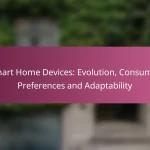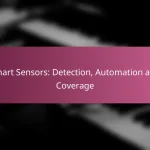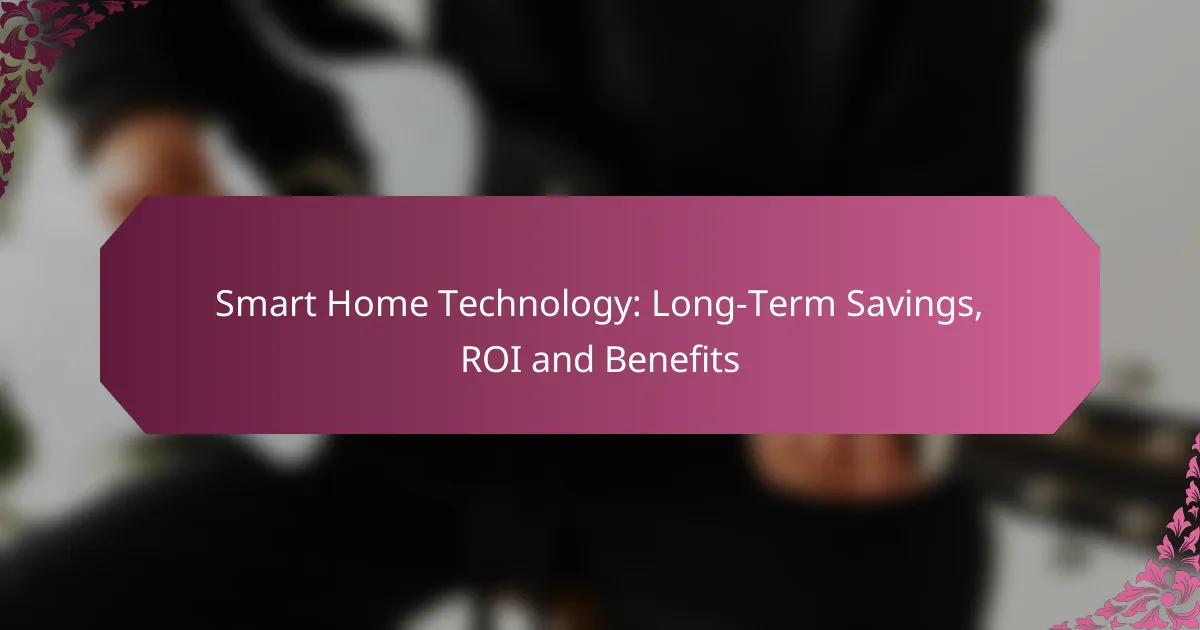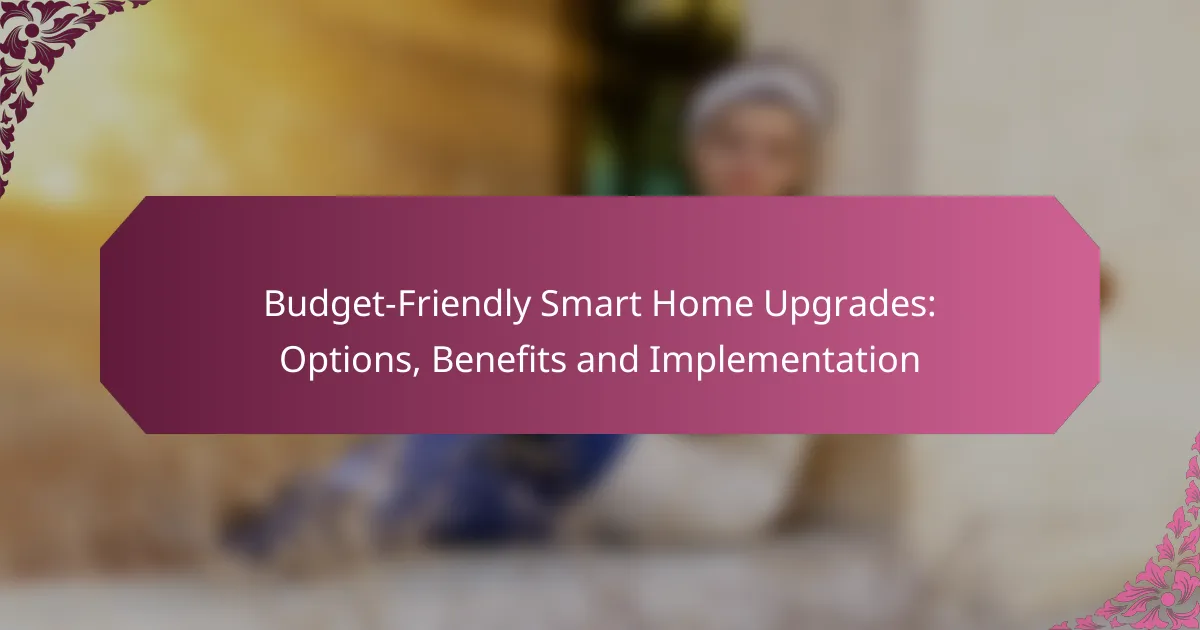Smart home technology presents homeowners with the opportunity for significant long-term savings through optimized energy use and reduced maintenance costs. By investing in smart devices, individuals can enjoy lower utility bills, enhanced security, and increased property value, making it a financially sound choice. The benefits extend beyond cost savings, offering improved convenience and remote monitoring capabilities that simplify daily living.
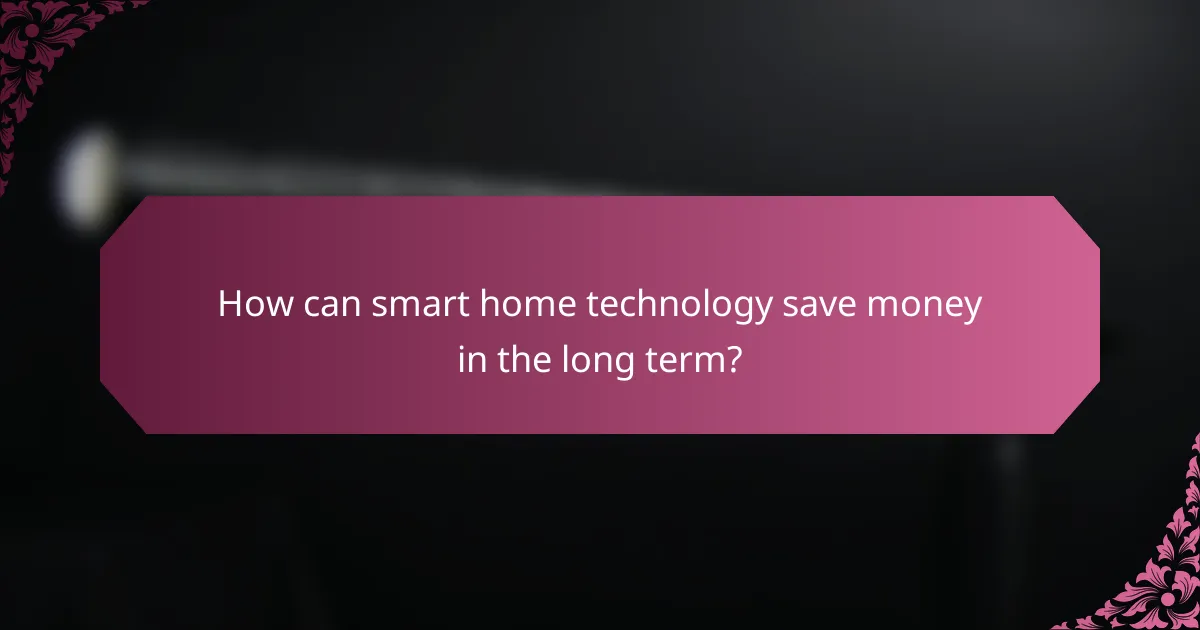
How can smart home technology save money in the long term?
Smart home technology can lead to significant long-term savings by optimizing energy use, reducing maintenance costs, and increasing property value. By investing in smart devices, homeowners can enjoy lower utility bills and a more efficient living environment.
Energy-efficient devices
Energy-efficient devices are designed to consume less power while delivering the same performance. Smart thermostats, LED lighting, and energy-efficient appliances can automatically adjust their usage based on your habits, leading to lower energy consumption. For example, a smart thermostat can reduce heating and cooling costs by up to 20% by learning your schedule and preferences.
When selecting devices, look for ENERGY STAR ratings, which indicate compliance with energy efficiency standards. Investing in these technologies can yield savings that accumulate over time, making them a wise choice for budget-conscious homeowners.
Reduced utility bills
By implementing smart home technology, homeowners can significantly reduce their utility bills. Smart meters and energy monitoring systems provide real-time data on energy usage, allowing you to identify and eliminate wasteful habits. For instance, knowing peak usage times can help you shift energy-intensive tasks to off-peak hours, saving on costs.
Additionally, smart irrigation systems can optimize water usage in gardens, leading to lower water bills. Many homeowners report savings of 10-30% on their utility bills after adopting smart technologies, making it a financially sound investment.
Lower maintenance costs
Smart home technology can also lead to lower maintenance costs by providing timely alerts and diagnostics. For example, smart smoke detectors and security systems can notify you of issues before they escalate, potentially preventing costly repairs. Regular monitoring of appliances can help identify inefficiencies or malfunctions early on.
Moreover, smart devices often come with warranties and support, reducing the financial burden of repairs. By staying proactive about maintenance, homeowners can avoid unexpected expenses and extend the lifespan of their devices.
Increased property value
Investing in smart home technology can enhance your property’s market value. Homes equipped with smart devices are increasingly appealing to buyers, as they offer convenience, security, and energy efficiency. Features like smart lighting, security systems, and energy management tools can set your home apart in a competitive market.
According to real estate experts, homes with smart technology can see a price increase of 5-15% compared to similar properties without these features. This investment not only provides immediate savings but also contributes to long-term financial gains when selling your home.
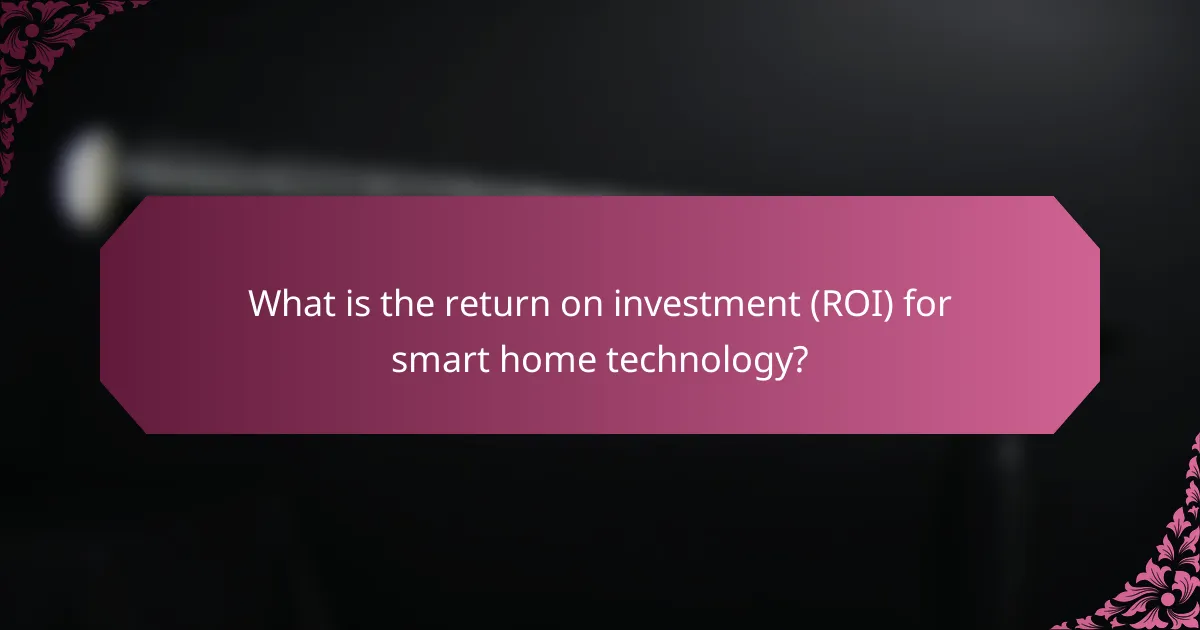
What is the return on investment (ROI) for smart home technology?
The return on investment (ROI) for smart home technology can vary significantly, but many homeowners report savings on energy bills and increased property value. Generally, the ROI is realized through reduced utility costs, enhanced security, and improved convenience, making smart home systems a financially sound investment over time.
Average ROI percentages
The average ROI for smart home technology typically ranges from 10% to 30%, depending on the specific systems installed and local energy costs. For instance, energy-efficient devices like smart thermostats can lead to savings of 10% to 20% on heating and cooling bills. Additionally, properties equipped with smart technology often see a boost in resale value, which can further enhance overall ROI.
Factors affecting ROI
Comparative analysis with traditional systems
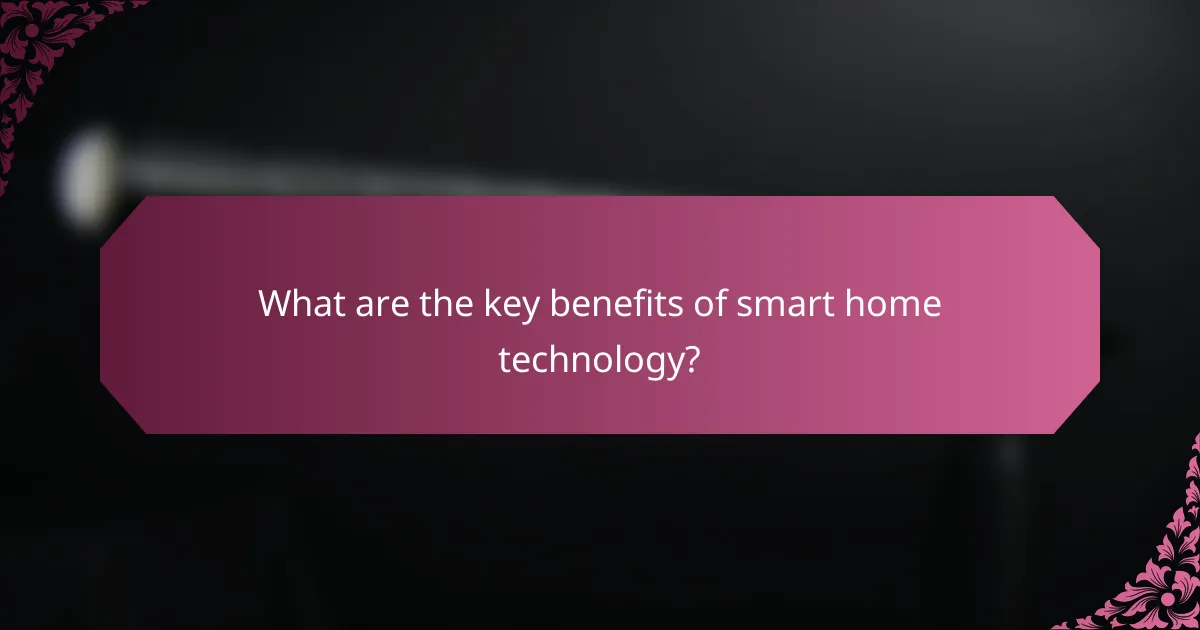
What are the key benefits of smart home technology?
Smart home technology offers numerous benefits, including enhanced convenience, improved security, and remote monitoring capabilities. These features not only simplify daily tasks but also contribute to long-term savings and increased property value.
Enhanced convenience
Smart home technology significantly enhances convenience by automating routine tasks. For instance, smart thermostats can adjust temperatures based on your schedule, saving energy while ensuring comfort.
Additionally, smart lighting systems allow you to control lights remotely or set schedules, reducing the need to manually switch them on and off. This level of automation can streamline daily routines and improve overall quality of life.
Improved security features
Smart home technology provides advanced security features that help protect your property. Devices such as smart locks and security cameras can be monitored and controlled remotely, giving homeowners peace of mind.
Many systems also offer alerts for unusual activity, enabling quick responses to potential threats. Investing in smart security can lower insurance premiums and enhance the safety of your home.
Remote monitoring capabilities
Remote monitoring capabilities allow homeowners to keep an eye on their property from anywhere. Smart cameras and sensors can send real-time notifications to your smartphone, ensuring you stay informed about your home’s status.
This feature is particularly useful for monitoring energy usage, as smart meters can track consumption patterns and help identify opportunities for savings. By leveraging remote monitoring, homeowners can make informed decisions about their energy use and security measures.

What smart home devices offer the best savings?
Smart home devices that provide the best savings typically include smart thermostats, smart lighting systems, and smart appliances. These technologies help reduce energy consumption and lower utility bills, making them a wise investment for long-term savings.
Smart thermostats
Smart thermostats optimize heating and cooling by learning your schedule and preferences. They can adjust temperatures automatically, ensuring energy is not wasted when you’re away from home. Many models can save homeowners around 10-15% on heating and cooling costs annually.
When selecting a smart thermostat, look for compatibility with your HVAC system and features like remote access, energy usage reports, and integration with other smart devices. Popular options include the Nest Learning Thermostat and Ecobee SmartThermostat.
Smart lighting systems
Smart lighting systems allow you to control your home’s lighting remotely and set schedules to reduce energy use. By using LED bulbs and smart switches, you can save up to 80% on lighting costs compared to traditional incandescent bulbs.
Consider systems that offer features such as dimming, color changing, and motion sensors for added convenience and efficiency. Brands like Philips Hue and LIFX provide a range of options to fit various needs and preferences.
Smart appliances
Smart appliances, including refrigerators, washers, and dryers, can enhance efficiency and reduce energy consumption. Many smart models can be programmed to run during off-peak hours, which can lead to lower energy bills.
When investing in smart appliances, look for Energy Star ratings and features that allow for remote monitoring and control. Examples include smart refrigerators that track food inventory and smart washers that optimize water usage.
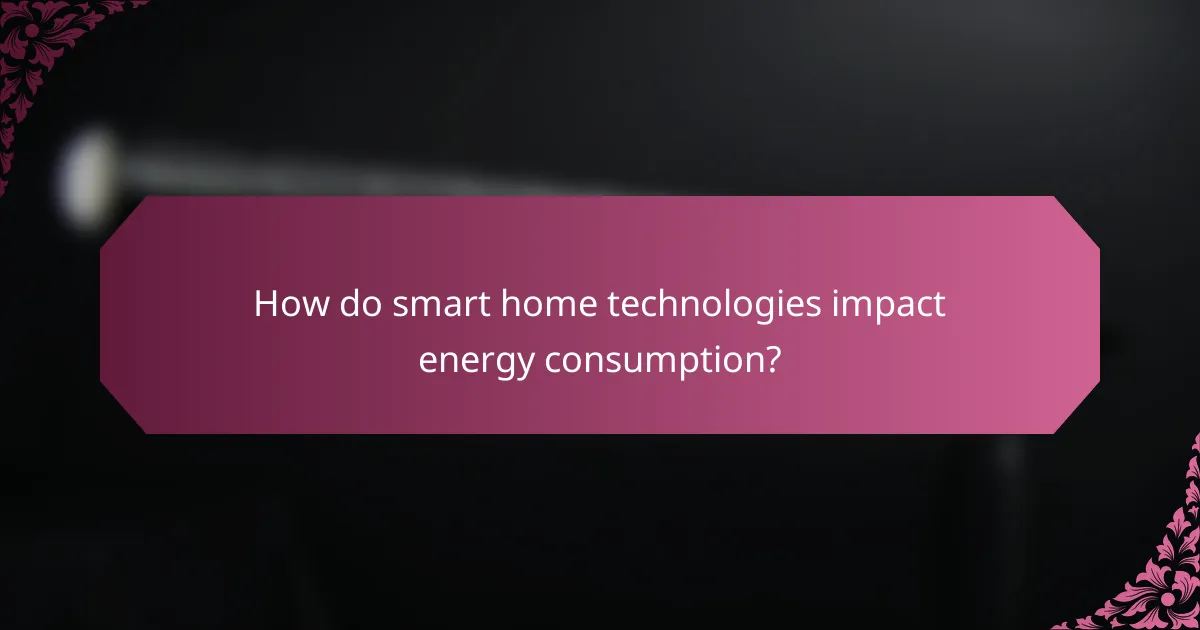
How do smart home technologies impact energy consumption?
Smart home technologies significantly reduce energy consumption by optimizing usage patterns and enhancing efficiency. These systems allow homeowners to monitor and control their energy use, leading to potential savings on utility bills.
Real-time energy usage tracking
Real-time energy usage tracking enables homeowners to see their energy consumption as it happens. This feature is often integrated into smart home systems, providing insights into which devices use the most power and when.
By identifying high-energy appliances, users can make informed decisions about usage patterns. For instance, running dishwashers or laundry machines during off-peak hours can lead to lower energy costs, especially in regions with variable electricity pricing.
To maximize savings, consider setting up alerts for unusual energy spikes or establishing schedules for high-consumption devices. This proactive approach can help maintain energy efficiency and reduce overall costs over time.


